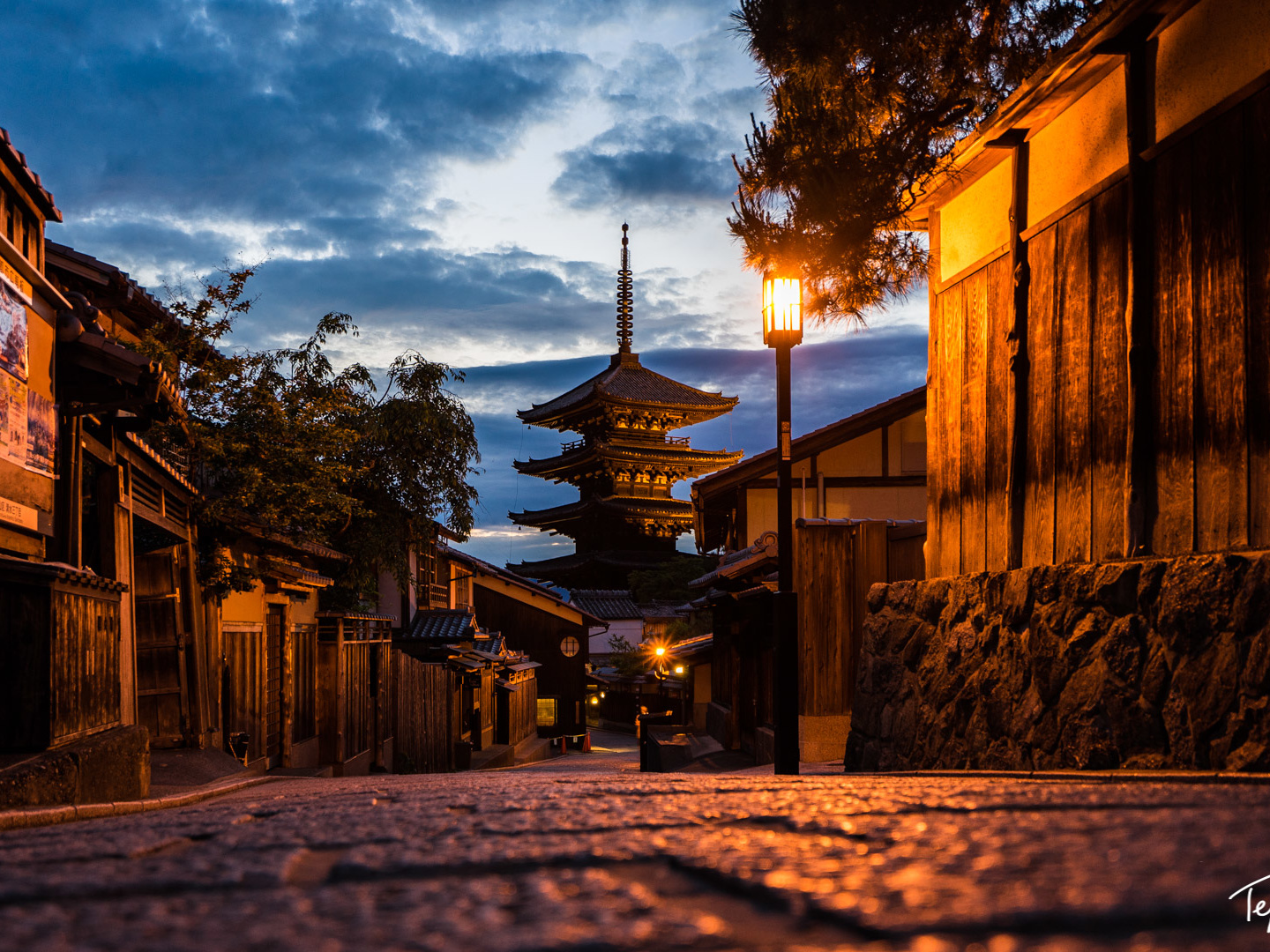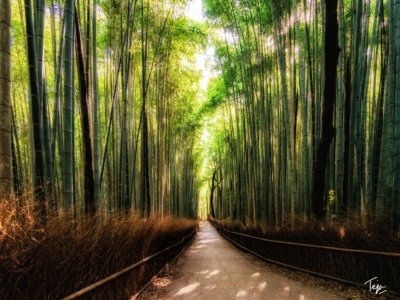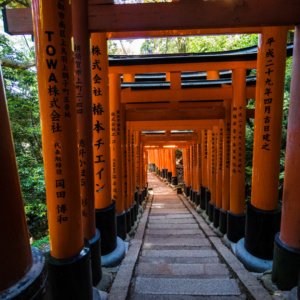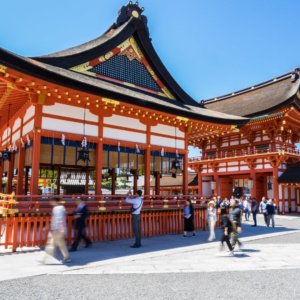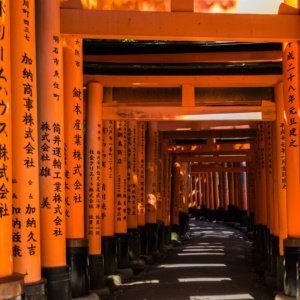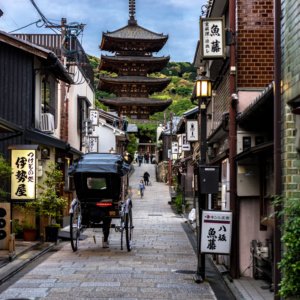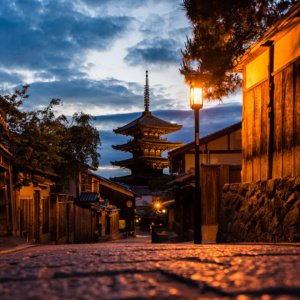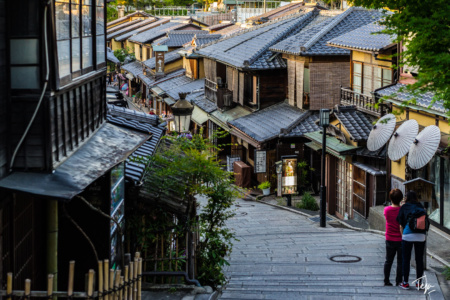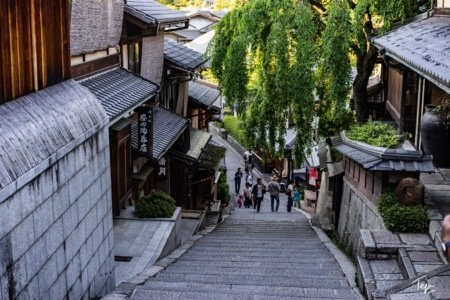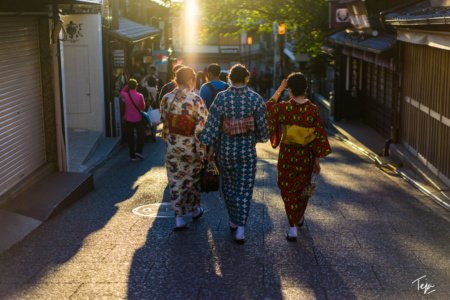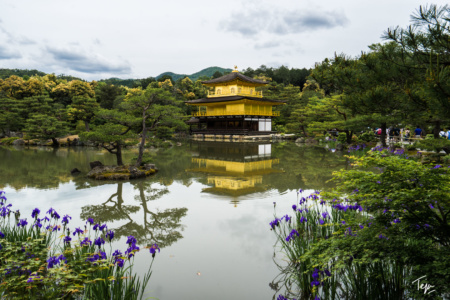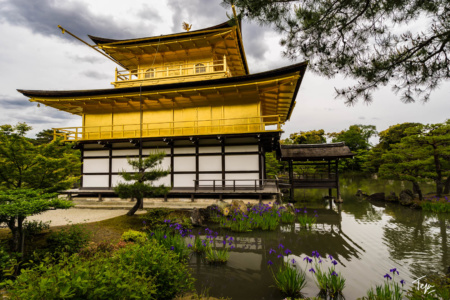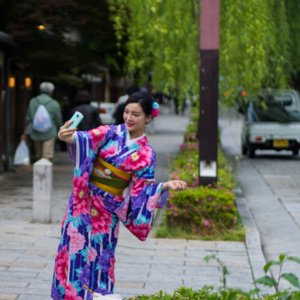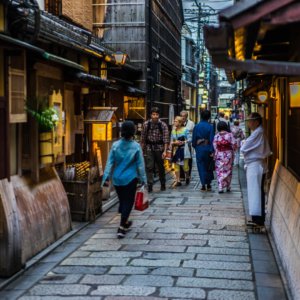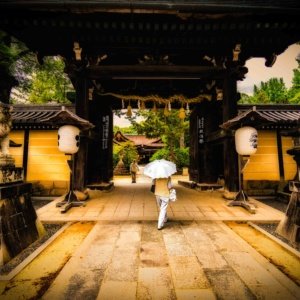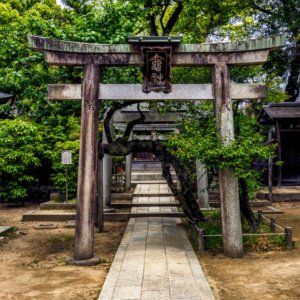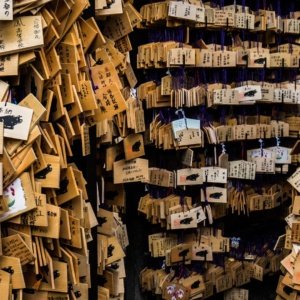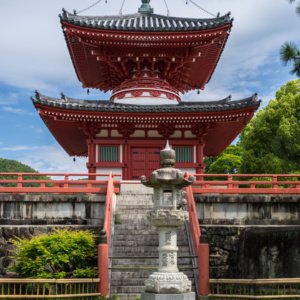One of the most annoying parts about visiting Japan is that a lot of the traditional temples and shrines you would think are ideal for golden hour are closed. So photography of the traditional Japanese scenes usually happens in less than ideal light, not to mention alongside what seems like all the tourists in the world. My worries of large crowds of tourists was justified with regard to Kyoto, but the city has so much character and spirit that it pretty much lets me overlook that part and describe at as being one of the most beautiful cities in the world. If I thought this was the case in the summer, I can’t imagine what people think when they visit in the Spring and Autumn seasons.
Here are some of my favorites locations in Kyoto:
1. Sagano Bamboo Forest (Arashiyama) (Free)
The Arashiyama Bamboo Forest is my favorite place in Kyoto because it’s open 24/7 and away from the noise of the city. If you get there right after sunrise, you will likely have the place to yourself. The best way to get to Arashiyama is by taxi (~$20) or public transportation via the JR Sagano Line from Kyoto Station.
2. Fushimi Inari-taisha (Free)
The Fushimi Inari-taisha is located just 5 minutes away from Kyoto by train and features over 5000 “tori” gates along a 2.5 mile trail leading to the final shrine, which is located 735 feet above the base. The hike can be cumbersome, but is well worth it in the mornings when there seems to be no one there. Thankfully, the shrine area is open 24/7 and so the earlier you go, the better photos you will get. Yet another Kyoto trademark that is ideal for photographers and tourists alike.
3. Hokanji Temple (aka Yakasa Pagoda) (Free)
The Hokan-ji Temple or Yakasa Pagoda is a 150 foot pagoda rising above Kyoto’s historic Higashiyama district. The temple is situated such that a delightful old world foreground can be photographed with the pagoda itself. The pagoda was said to have been built in 589 based on a supposed dream that a prince had. Dreamy and fairytale like are certainly descriptors for this part of Kyoto.
4. Higashiyama Historic District (Free)
Kyoto’s most famous historic district is not just a one trick pony with the Hokan-ji Temple, the area is an absolute delight to walk through. The best of all is that the district is located near central Kyoto. Not only is the area full of buildings of another time, but it is also full of people dressed up in kimanos making for that quintessential Japan postcard picture. The best part of the district is located between Kiyomizudera and Hokan-ji Temple. Recent refurbishments by the local government have even included the removal of visible telephone lines and power lines so that this area very much feels like 14th century Japan. Be warned though that evenings are crazy busy in this historic district because of the many souvenir shops. Prices are a bit high so you may want to look elsewhere for snacks and other treats.
5. Kinkaku-ji Temple (Entrance Fee)
The Kinkaku-ji Temple is one of the most popular tourist attractions in all of Japan. The reflection of this 14th century temple on Kyōko-chi or “mirror lake” is an ageless treasure that should be part of anyone’s travel portfolio. The only downside to the temple and the area is that it doesn’t open until 9 am on most days, which is well past golden hour. During Autumn, the area really shines with its fall colours, while in the early summer there are these blue flowers, which make up the foreground of my pictures.
6. Gion District (Free)
This historic district is from the Middle Ages when it was developed as a “Geisha” district to showcase the arts to travelers. I’ve been to many areas in Kyoto, but none had as many women dressed in kimanos. The ideal time to walk along the canals and streets lined with tea houses is just before sunset when the modern geishas (“women of art”) and traditionally dressed people come out for walks or pictures. The area is also full of nightlife which includes many bars and restaurants.
7. Tenman-gu & Shinto Shrine (Free)
This little shrine is perhaps one of the most overlooked temples in Kyoto. This certainly makes sense given that Kyoto has over 1500 shrines and that the more popular Kinkaku-ji temple is quite close. I ended up visiting here on happen stance that my Airbnb was located just down the street from this temple. I especially like that this temple did not have crowds even during the midday and had some unique hangings or relics (I won’t dare make a guess at what those bookcases full of hangings are called). Unfortunately it is yet another attraction in Kyoto that isn’t open for golden hour, which brought its ranking down on its list.
8. Rengeoin Sanjusangendo (Entrance Fee)
This temple is located right next to the Hyatt Regency Kyoto and is referred to commonly as the “thousand Budha temple.” I don’t normally include temples I can’t photograph, but this temple is different from the others. Going inside and seeing the statues was like seeing the Japanese version of those Terracotta warriors in China. Unfortunately, I lost the pictures I took outside this temple and I don’t recall pictures being allowed inside it. So no photos from this location, but well worth paying a visit.
Here are some of the places that might be better in other seasons:
Tenryu-ji Temple (Entrance Fee)
This UNESCO world heritage site, which is located at the end of the Arashiyama Bamboo Forest trail or walk, was a bit of a disappointment for me. It wasn’t open for golden hour to say the least, but also I didn’t see much that was photogenic or unique on this summer day. The gardens are quite large, but the temple itself is quite a bit smaller than I expected. It’s certainly interesting to take a look at and mark off the checklist, but as a tourist it didn’t have the character or history that a UNESCO site usually has. Unfortunately, this might also be due to repeated fires destroying the buildings. The garden may have survived those fires, but fall might be the season that this area truly shines. I might just skip visiting if I were to visit in the summer again.
Daikaku-ji Temple (Entrance Fee)
This temple is one of the most iconic locations in Arashiyama with its iconic orange colored facade, pond, and reflections. I found the location to be rather boring in the midday light. As a history buff, I found this 9th century locality to be fascinating, but I pretty much had to read most of it online anyway. I bet this place would shine in the spring and fall with the cherry blossoms or fall colours shining through. But then again, what place in Kyoto wouldn’t shine in those seasons?
Bottom Line:
Kyoto is not just an anagram of Tokyo, it is a unique and beautiful city in its own right and deserves all the hype it gets. There is no shortage of natural beauty, street life, history, or tourists, for that matter, in this city. There’s no doubt that this creates an atmosphere unlike any I’ve ever been to before. And it was also nice to note that if you are on a budget, many of the highlights of Kyoto are absolutely free to see. So evidence suggests there are very few reasons not visit Kyoto from your port of entry into Japan (which is usually Tokyo or Osaka). I look forward to returning back in the coming years, hopefully when the cherry blossoms are in full bloom.
Japan Trip Report Index:
United Business Class DFW – IAH
United Polaris Houston – Tokyo (Narita)
Narita Express (Narita – Tokyo Station)
Focal Point: Tokyo in the Rain
Focal Point: The Secret Alleys of Tokyo
A Tourist’s View of Tokyo: Sunday in Asakusa
JR Rail Review: Shinkansen Hikari First Class (Tokyo – Kyoto)
Airbnb Review: Townhouse in Kyoto’s Old Town
My Favorite Places To Visit in Kyoto During Summer


